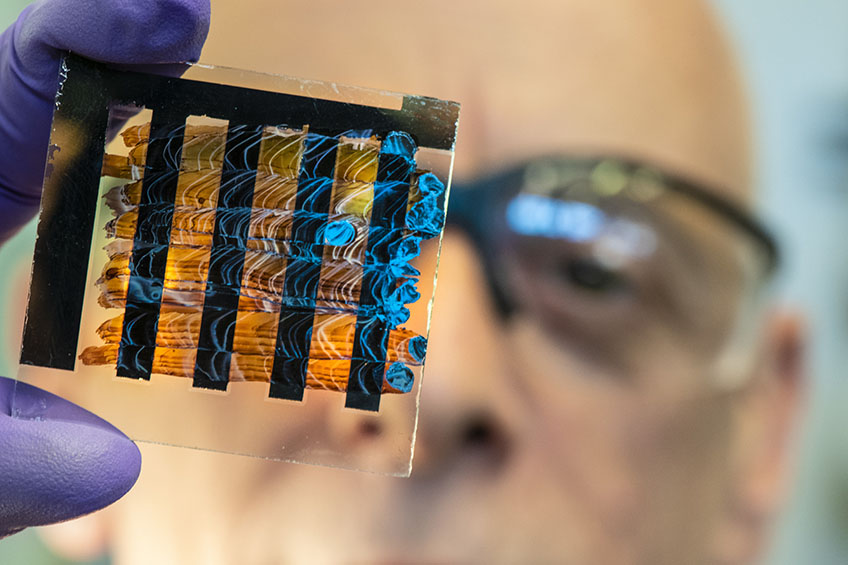International Effort Aims to Establish Protocols for Assessing, Reporting Perovskite Stability

Perovskite solar cells have rapidly emerged in the past decade as an extremely efficient method to transform sunlight into electricity, but the issue of stability has so far kept them from commercialization. Perovskite solar cells have shown to degrade under a variety of conditions, including exposure to moisture and air, so ongoing efforts have centered on increasing their lifespan.
The authors of a newly published paper in Nature Energy noted: “Improving the long-term stability of perovskite solar cells is critical to the deployment of this technology. Despite the great emphasis laid on stability-related investigations, publications lack consistency in experimental procedures and parameters reported. It is therefore challenging to reproduce and compare results and thereby develop a deep understanding of degradation mechanisms.”
The co-authors from NREL are Joseph Berry, Joseph Luther, Matthew Reese, and Kai Zhu. Michael McGehee, a professor at the University of Colorado, Boulder, who has an NREL joint appointment and works closely with the NREL perovskite team, is also a co-author.
In addition to the scientists from NREL, 55 researchers reached a consensus on additional procedures to account for properties specific to perovskite solar cells as a way “to unify the stability assessment and to understand failure modes.” Among the authors are Nam-Gyu Park of Sungkyunkwan University in South Korea and Henry Snaith of the University of Oxford; the two separately first reported efficient solid-state perovskite cells.
The accord sprang from a roundtable discussion about perovskite stability that was held in China in October 2018 during the 11th International Summit on Organic and Hybrid Photovoltaics Stability. Their talks were inspired by colleagues working on organic photovoltaic cells, who in 2011 developed recommendations for evaluating the stability of their devices (so-called ISOS protocols).
The resulting agreement is titled “Consensus statement for stability assessment and reporting for perovskite photovoltaics based on ISOS procedures.”
The researchers agreed the existing tests on solar cells are not appropriate for use on perovskites, as these have different material properties and device architectures. Publications studying the stability of perovskite cells lack consistency in the experimental procedures used and requirements to report key test parameters, which hampers data comparison and a proper understanding of the cell degradation mechanisms.
The experts devised a list of protocols that should be followed that account for specific features of perovskite cells, including light-dark cycling, the study of cell behavior under electrical bias in the dark, and intrinsic stability testing, among others. The researchers have also proposed a checklist for reporting results aimed at improving reproducibility. In particular, the consensus urges specifying the number of samples studied in each test. One critical analysis of the quality of perovskite stability studies found nearly half examined only a single sample.
The researchers at NREL were supported by the De-Risking Halide Perovskite Solar Cells program of the National Center for Photovoltaics, which is funded by the Department of Energy’s Solar Energy Technology Office.
Last Updated May 28, 2025
